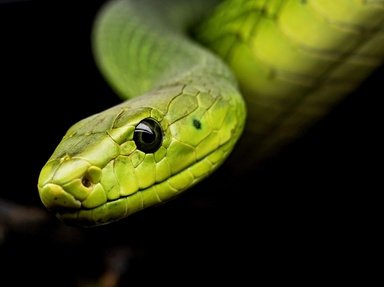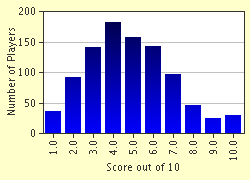Quiz Answer Key and Fun Facts
1. At a ranking of 10, this snake grows to a length of 1m and is a dull green-grey colour. Found in north eastern Queensland, Fraser Island and south eastern Queensland through to New South Wales, its venom is
strongly neurotoxic.
2. At a ranking of 9, this snake is found only in the east, from southern Cape York Peninsula through Queensland and down into Victoria. With a broad head and a heavy, black or very dark brown body, it averages 1m in length. This snake is very placid but its venom is highly toxic!
3. At a ranking of 8, this quite common 'colourful' snake is found in the south and east of Australia. It has a narrow head and a heavy, blue-black body up to 2m in length. It is a reluctant attacker but if bitten, a small child could be fatally poisoned.
4. At a ranking of 7, this 'striking' snake has a ferocious temper but rarely comes in contact with humans. Inhabiting most of Western Australia, the Northern Territory, South Australia, western Queensland and New South Wales, juveniles are almost as toxic as adults in this species! With a narrow head and slender body the average length of this snake is 1.4m.
5. At a ranking of 6, this rather small snake, at a length of only 75cm, has a placid nature, which makes it all the more dangerous! It does not slither away from the approach of a human and when stood upon strikes with lightening speed and efficiency! It has a wide head with a flat, blunt snout and a fat body that tapers to a very thin tail.
6. At a ranking of 5, this snake grows up to 3m in length. A heavy built snake with a broad head it varies in colour through brown to olive-green, with a creamy belly. Found in eucalypt forests and treeless plains in the drier areas of almost all of Australia, except the south coast and Tasmania, it is active by day and by night!
7. At a ranking of 4, this snake inhabits over half of the Australian continent, mostly the eastern states and some inland areas of the Northern Territory and South Australia. With a narrow head and slender, grey, brown, orange or nearly black body this snake averages 1.4m in length. Known as the 'false cobra' because of its attacking stance this snake has relatively small fangs and a low output of venom.
8. At a rating of 3, this somewhat broad-headed snake is up to 1.5m long with an olive (green/brown) colouring. Found in Tasmania, south eastern Queensland, New South Wales, Victoria, south-west Western Australia and south western South Australia, it is quite common. Active by day, this 'vicious viper' is nocturnal in warmer weather.
9. At a rating of 2, this snake inhabits the coastal fringes of Queensland (and into northern New South Wales), north western Western Australia and the northern coast of the Northern Territory. It has an angular brow above a reddish eye and a body measuring up to 2.9m! This snake has been responsible for many human deaths!
10. At a rating of 1, this snake is not that common in Australia, inhabiting only far western Queensland and a few 'corners' of South Australia. It measures up to 2m in length and has a glossy black head. Active by day and eating mostly native rats and mice, this snake is potentially very dangerous, and has been responsible for many severe envenomations!
Source: Author
Engadine
This quiz was reviewed by FunTrivia editor
crisw before going online.
Any errors found in FunTrivia content are routinely corrected through our feedback system.

